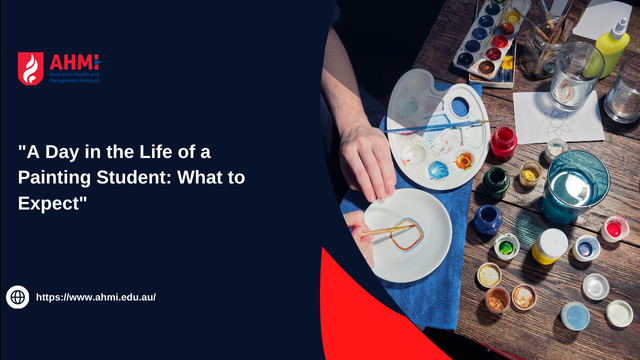Institutions like AHMI , TAFE Queensland, MBA Australia, and Holmesglen Institute offer comprehensive Certificate of Painting courses designed to immerse students in the world of painting. Whether you’re starting a new career or deepening your passion for art, understanding what a typical day involves can help you prepare for this exciting journey. Here’s a glimpse into a day in the life of a painting student, highlighting what to expect from your routine, classes, and hands-on activities.
Morning: Starting the Day
Preparation and Commute
A typical day starts early for painting students. Mornings involve gathering essential supplies such as sketchbooks, brushes, and paints. If you’re attending classes, you’ll likely commute to campus, which may include public transport or driving.
Classroom Sessions
The day generally begins with a classroom session focusing on theoretical aspects of painting. These sessions cover topics like color theory, surface preparation, and different paint types. Instructors provide lectures, demonstrations, and occasionally invite guest speakers to enhance your learning experience.
Midday: Hands-On Practice
Practical Workshops
After the theoretical part, students engage in practical workshops where they apply what they’ve learned. These hands-on sessions are crucial for developing your skills. You might practice techniques such as brushwork, color mixing, and texture creation. Workshops are where you start to bring your creativity to life.
Lunch Break
During lunch, you have the opportunity to relax and socialize with fellow students. This break is a great time to discuss your projects, share tips, and connect with others who share your passion. Most institutions provide spaces for students to eat and unwind.
Afternoon: Project Work and Review
Project Work
In the afternoon, students often work on individual or group projects. This time is dedicated to experimenting with different techniques and styles, and working on assignments that challenge your creativity. Whether you’re working on a mural, decorative finishes, or other painting projects, you’ll have the resources and support you need.
Instructor Feedback
Feedback sessions are a key component of the learning process. Instructors provide constructive critiques to help you refine your skills and improve your techniques. One-on-one sessions with instructors offer personalized guidance and support.
Late Afternoon: Administrative Tasks and Reflection
Administrative Duties
As the day ends, students may handle administrative tasks such as organizing materials, preparing for the next day’s classes, or completing necessary documentation. Keeping logs of your projects and progress helps in tracking development.
Reflection and Study
Before heading home, taking time to reflect on the day’s lessons and review your work is beneficial. Studying additional resources or practicing techniques independently helps reinforce what you’ve learned and prepares you for upcoming classes.
Evening: Personal Time and Relaxation
Personal Projects
Many students use their evenings for personal painting projects or additional practice. This time is perfect for exploring new ideas, experimenting with techniques, or working on pieces that interest you beyond the curriculum.
Relaxation
Maintaining a healthy balance between your studies and personal life is essential. Spend time relaxing, engaging in hobbies, or socializing to avoid burnout and stay motivated throughout your course.
A day in the life of a painting student is a dynamic mix of structured learning, hands-on practice, and creative exploration. Institutions like AHMI , TAFE Queensland, MBA Australia, and Holmesglen Institute offer comprehensive programs that ensure students are well-prepared for a successful career in painting. By understanding and embracing the daily routine, you can maximize your learning experience and thrive in the vibrant field of painting.







